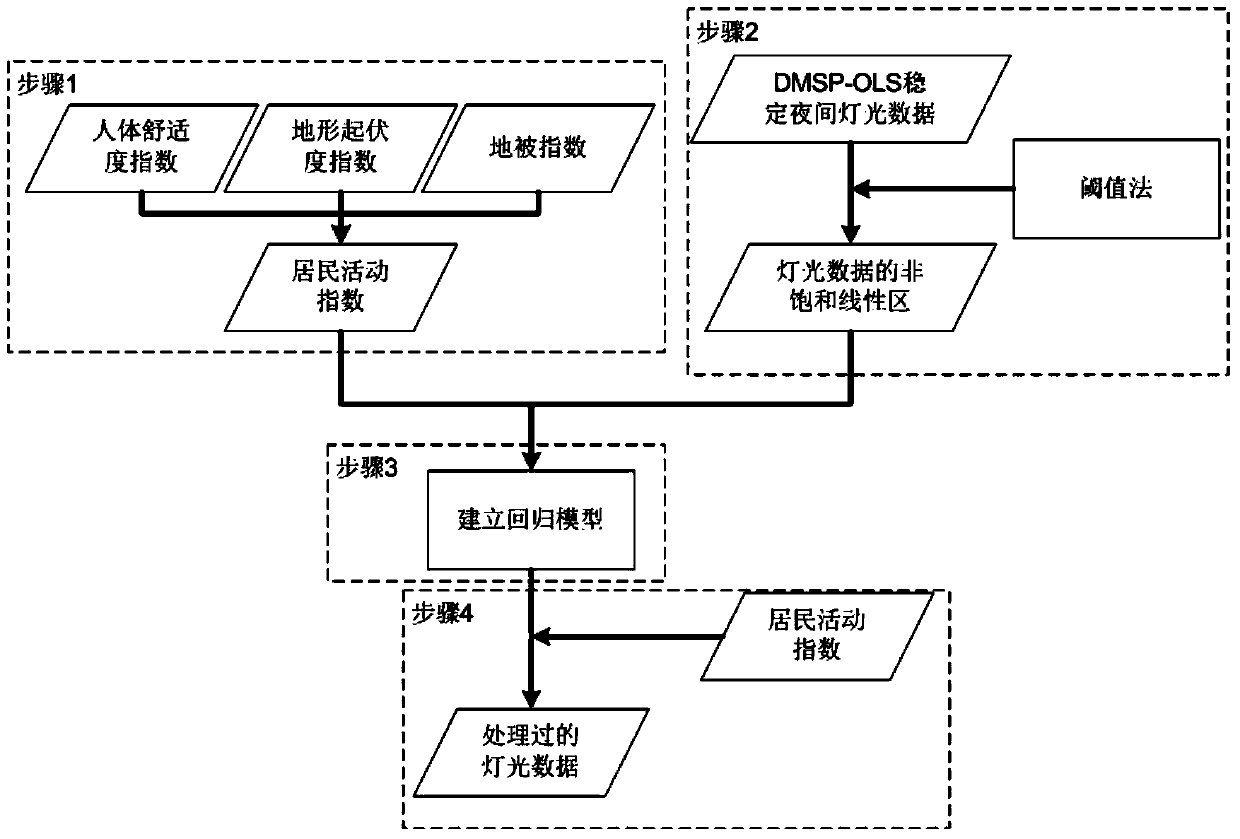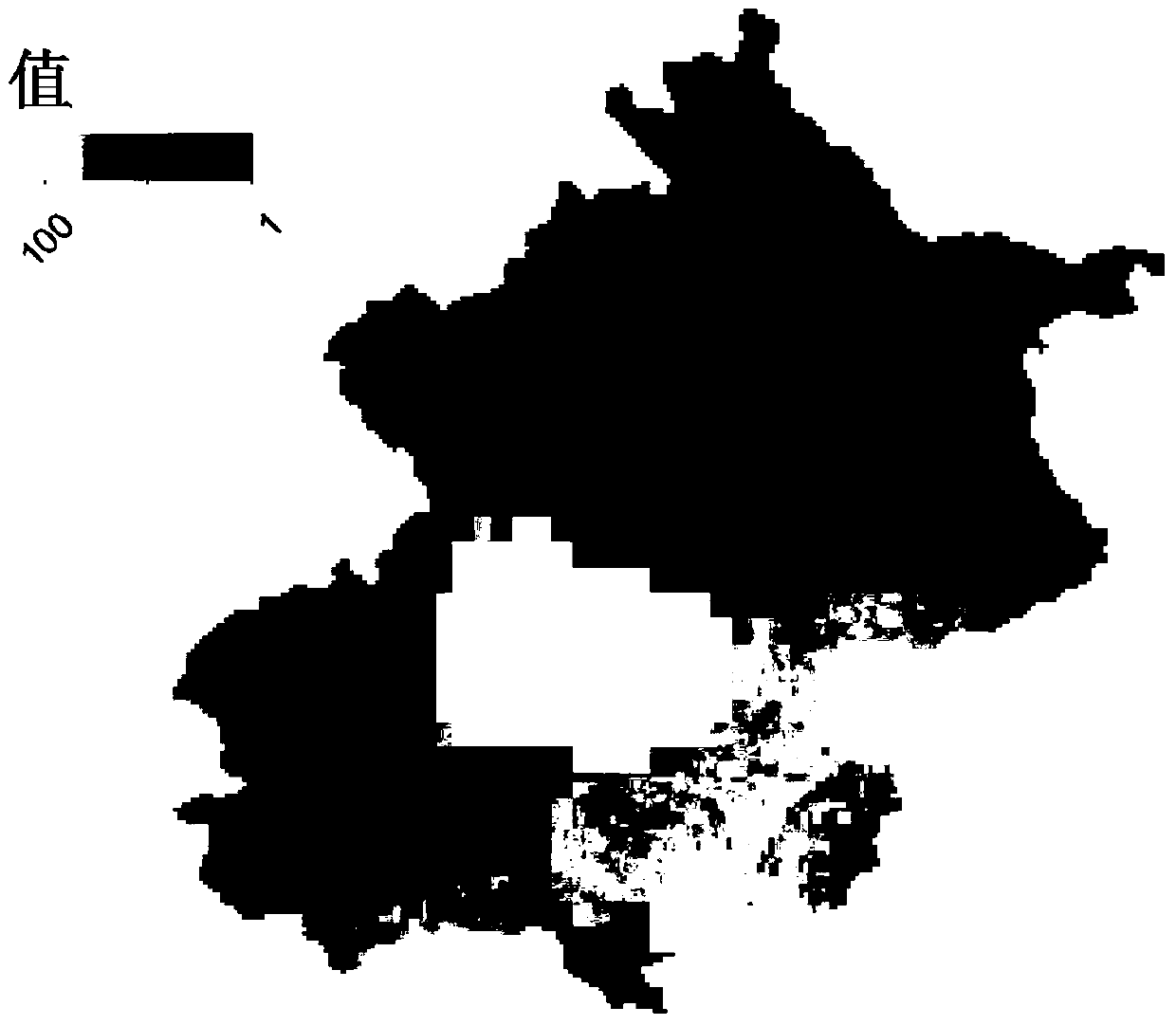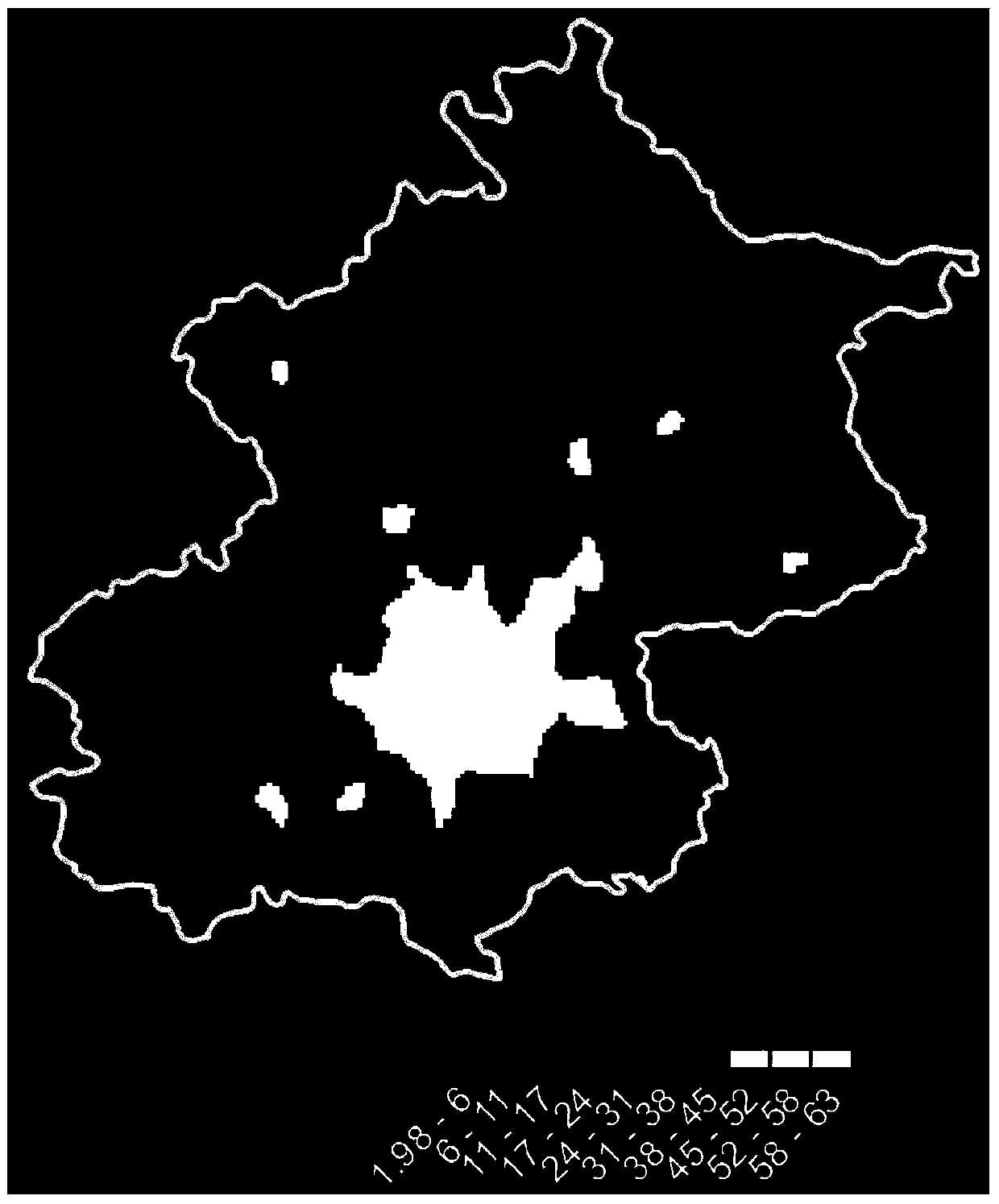Night lamplight observation accuracy improving method based on geographic auxiliary data
A technology of night lighting and observation accuracy, applied in electrical digital data processing, special data processing applications, instruments, etc., can solve problems such as difficulty in effectively responding to strong lights, inability to detect electromagnetic waves, etc., to reduce saturation and improve accuracy.
- Summary
- Abstract
- Description
- Claims
- Application Information
AI Technical Summary
Problems solved by technology
Method used
Image
Examples
Embodiment Construction
[0024] Such as figure 1 As shown, the steps of the method for improving the accuracy of night light observation based on geographic assistance data are as follows:
[0025] (1) According to the three indicators of human comfort index SI, terrain relief index F and land cover index LCI in the area to construct the resident activity index HAI,
[0026] HAI={α·[1-(SI-SI min ) / (SI max -SI min )]+β·[1-(F-F min ) / (F max -F min )]}×LCI×100, where α, β are set values within the range of (0,1), where α=0.53, β=0.47, SI min and SI max are the minimum and maximum values of SI, respectively, and F min and F max are the minimum and maximum values of F, respectively;
[0027] (2) First, standardize the night light data in the area, and the processing formula is OLS'=(OLS-OLS min ) / (OLS max -OLS min ), where OLS is the night light data, OLS' is the processed night light data, OLS min and OLS max They are the minimum and maximum values of OLS; set the threshold, and acc...
PUM
 Login to View More
Login to View More Abstract
Description
Claims
Application Information
 Login to View More
Login to View More - R&D
- Intellectual Property
- Life Sciences
- Materials
- Tech Scout
- Unparalleled Data Quality
- Higher Quality Content
- 60% Fewer Hallucinations
Browse by: Latest US Patents, China's latest patents, Technical Efficacy Thesaurus, Application Domain, Technology Topic, Popular Technical Reports.
© 2025 PatSnap. All rights reserved.Legal|Privacy policy|Modern Slavery Act Transparency Statement|Sitemap|About US| Contact US: help@patsnap.com



